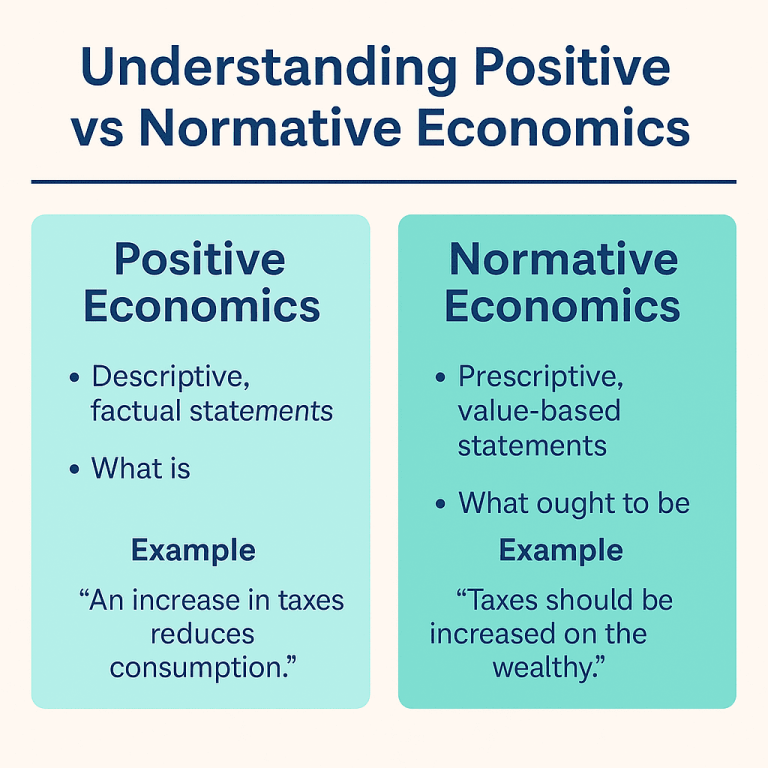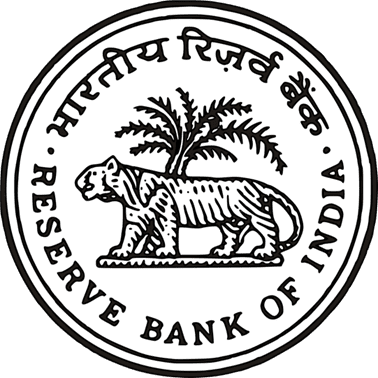Understanding Positive Economics, Normative Economics and the difference between Positive Economics Vs Normative Economics is a crucial starting point to economic theory.
This guide explains What is Positive Economics and What is Normative Economics in simple terms, provides real-world examples, and shows how these concepts influence economic theory and economic decision-making.
Positive Economics Explained
Positive Economics is the objective, fact-based study of economic behavior that focuses on “what is” rather than “what ought to be.”
Positive economics deals with facts, data, and objective analysis. It focuses on describing, explaining, and predicting economic phenomena without making value judgments.
It relies on empirical data, testable hypotheses, and measurable outcomes to analyze cause-and-effect relationships—free from subjective judgments or policy opinions.
Example:
A positive economics statement might be: “A 5% sales tax increase on luxury goods leads to a 3% drop in consumer demand.” This is verifiable with data and avoids moral or political bias (unlike normative economics, which would argue whether the tax should exist).
“An increase in interest rates will reduce borrowing.”
This statement can be tested using data and economic models, making it a positive economic statement.
Why It Matters in Economics:
Helps in evidence-based policymaking.
Lays the groundwork for understanding economic trends and formulating strategies.
Critical for exam preparation if you’re appearing for competitive economics exams like the CUET PG Economics Syllabus, IIT JAM Economics Syllabus, or Indian Economic Service Syllabus.
Normative Economics Explained
Normative Economics is the subjective branch of economics focused on “what ought to be”—it incorporates value judgments, opinions, and policy recommendations about how economic outcomes should unfold. Unlike positive economics, it deals with ideals and fairness rather than provable facts.
Normative economics deals with opinions, values, and what ought to be. It is subjective and often involves ethical or political considerations.
Example:
- A normative economics statement might argue: “The government should raise taxes on the wealthy to reduce income inequality.” This reflects a moral stance (equality) and cannot be tested or disproven purely with data.
“The government should reduce income tax rates to improve economic welfare.”
This cannot be objectively proven right or wrong — it depends on one’s personal beliefs or societal goals.
Why It Matters in Economics:
Shapes policy debates and public discourse.
Influences government decision-making and budget priorities.
Encourages students to critically evaluate economic policies beyond just the numbers.
Key Differences: Positive Economics vs Normative Economics
| Aspect | Positive Economics | Normative Economics |
|---|---|---|
| Nature | Objective, fact-based | Subjective, opinion-based |
| Verification | Can be tested or proven | Cannot be objectively proven |
| Purpose | Explains “what is” | Suggests “what ought to be” |
| Example | “Rising fuel prices reduce car usage” | “The government should subsidise fuel prices” |
Why Understanding the Difference is Important
Distinguishing between positive economics and normative economics is crucial for:
Economic analysis: Knowing whether you’re dealing with facts or opinions.
Economic theory: Understanding the role of value judgments in policy formation.
Economic decision-making: Separating data-driven conclusions from subjective preferences.
Conclusion
Whether you’re preparing for academic studies or competitive exams like CUET PG Economics, IIT JAM Economics, or Indian Economic Service, mastering Positive Economics vs Normative Economics is fundamental.
It helps you think like an economist, distinguish facts from values, and engage meaningfully in economic debates



